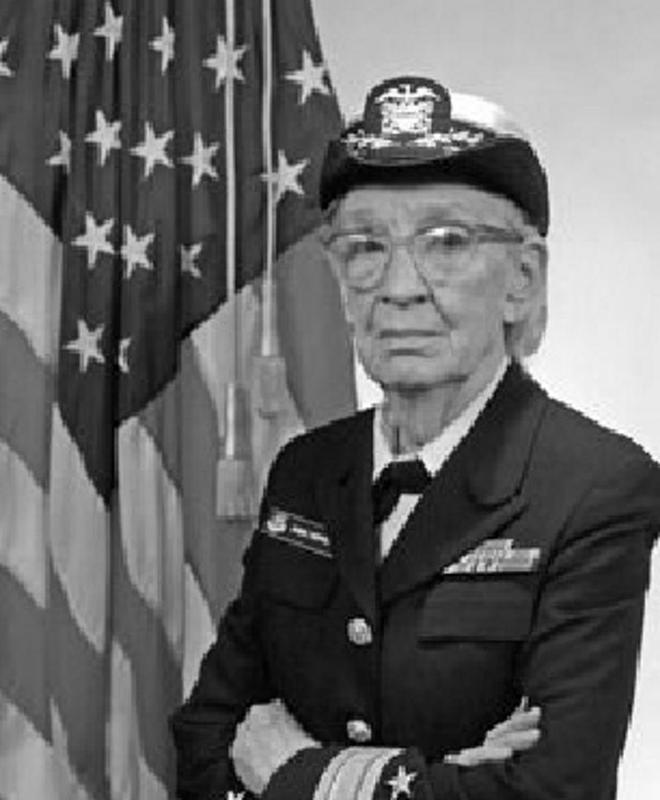Locality
Arlington County
Occupation
Computer Scientist and Rear Admiral
Biography
Known as "the first lady of software," "Amazing Grace," and "Grandma COBOL," Grace Brewster Murray Hopper (December 9, 1906–January 1, 1992) was a pioneer in computer science. Born in New York City, she received a Ph.D. in mathematics and physics from Yale University in 1934, four years after marrying Vincent Foster Hopper, an educator. During World War II she joined the United States Naval Reserves and was assigned to the Bureau of Ordnance Computation Project at Harvard University, where she programmed the first large-scale computer in the United States. At the Eckert-Mauchly Computer Corporation (later Sperry Rand) she helped design UNIVAC, the first large-scale commercial computer.
In 1952 Hopper began writing a computer program for business-oriented tasks. FLOW-MATIC, her 1955 program, became a model for COBOL (Common Business-Oriented Language), the first computer language that allowed operators to use words rather than number code in programming. After a moth trapped in a relay shut down a computer, Hopper coined the computer terms "bug" (referring to a problem or glitch) and "debug" (to remove a programming error). In 1985 she became the United States Navy's first female rear admiral. Throughout her career in mathematics, computer technology, and the navy all fields dominated by men Hopper continually had to prove herself. She observed, "If you do something once, people will call it an accident. If you do it twice, they call it a coincidence. But do it a third time and you've just proven a natural law!" Trying to fight what she called human beings' allergy to change, she kept a clock on her wall that ran counterclockwise.
Hopper retired to Arlington County, Virginia, in 1986 and became a consultant for Digital Equipment Corporation (DEC). She died in 1992 and was buried in Arlington National Cemetery. A guided missile destroyer, commissioned in 1997, bears her name.
2006 Virginia Women in History honoree, Library of Virginia and Virginia Foundation for Women.
In 1952 Hopper began writing a computer program for business-oriented tasks. FLOW-MATIC, her 1955 program, became a model for COBOL (Common Business-Oriented Language), the first computer language that allowed operators to use words rather than number code in programming. After a moth trapped in a relay shut down a computer, Hopper coined the computer terms "bug" (referring to a problem or glitch) and "debug" (to remove a programming error). In 1985 she became the United States Navy's first female rear admiral. Throughout her career in mathematics, computer technology, and the navy all fields dominated by men Hopper continually had to prove herself. She observed, "If you do something once, people will call it an accident. If you do it twice, they call it a coincidence. But do it a third time and you've just proven a natural law!" Trying to fight what she called human beings' allergy to change, she kept a clock on her wall that ran counterclockwise.
Hopper retired to Arlington County, Virginia, in 1986 and became a consultant for Digital Equipment Corporation (DEC). She died in 1992 and was buried in Arlington National Cemetery. A guided missile destroyer, commissioned in 1997, bears her name.
2006 Virginia Women in History honoree, Library of Virginia and Virginia Foundation for Women.
File Citation(s)
Image Courtesy of the United States Navy's Wesbite

